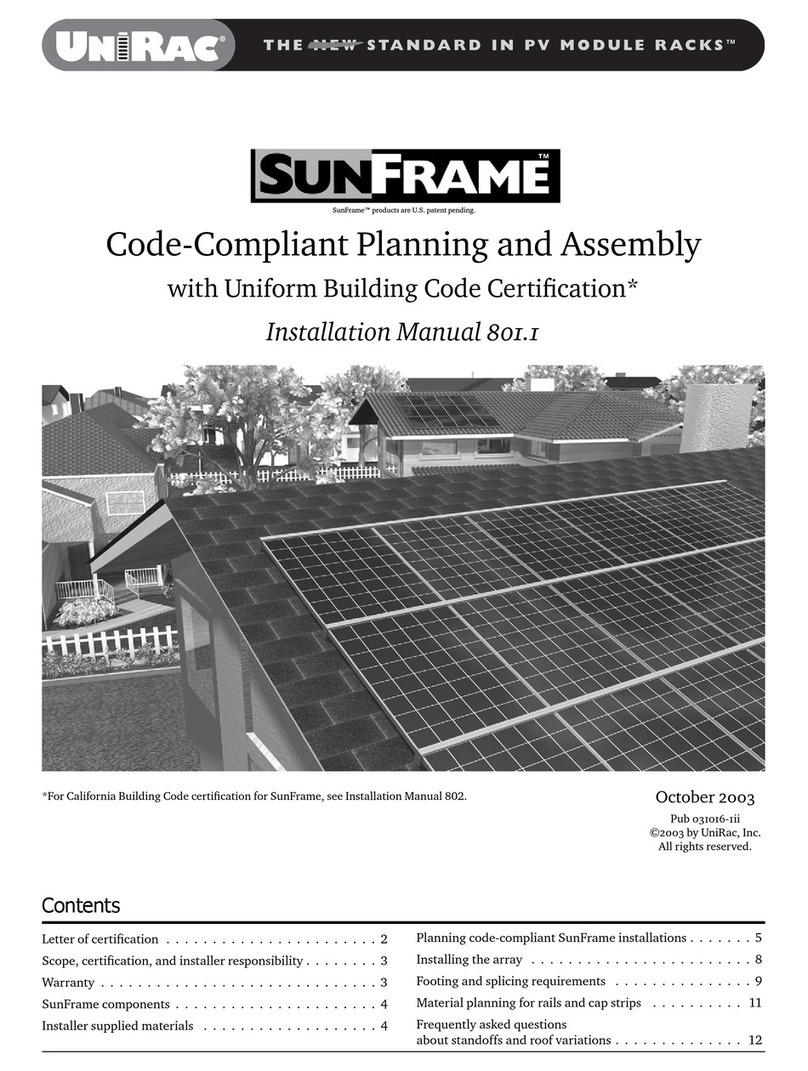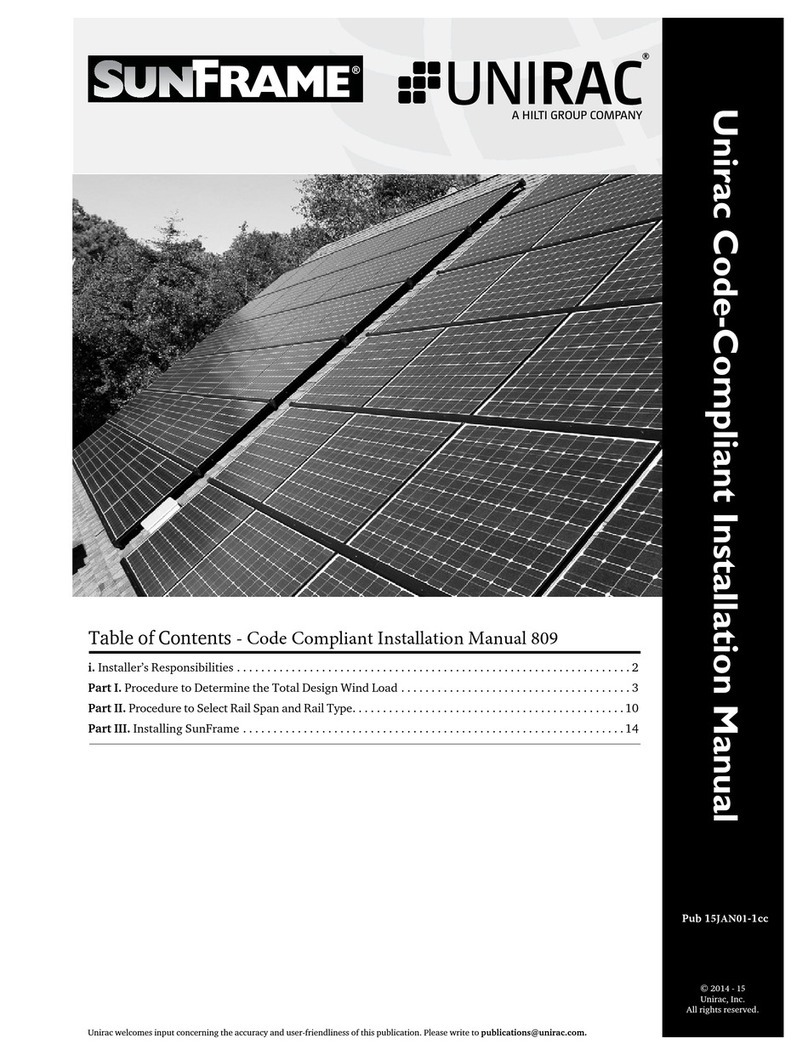
Page
3
Installation Manual 802 SunFrame™ Code-Compliant Planning and Assembly
Scope, certification, and installer responsibility
Please review this manual thoroughly
before installing your SunFrame.
This bulletin provides (1) support-
ing documentation for building per-
mit applications relating to UniRac’s
SunFrame™ PV module framing and
mounting system, and (2) planning
and assembly instructions for Sun-
Frame.
SunFrame products, when installed in
accordance with this bulletin, will be
structurally adequate and will meet the
Uniform Building Code, 1997, hereaf-
ter UBC 1997; and the 2001 California
Building Code. UniRac also provides a
limited warranty on SunFrame prod-
ucts (below).
The installer is solely responsible for:
• Complying with all applicable local or national
building codes, including any that may supercede
this manual;
• Ensuring that UniRac and other products are ap-
propriate for the particular installations and are
designed for the installation environment;
• Ensuring that the roof, its rafters, connections, and
other structural support members can support the
array under live load conditions;
• Ensuring that lag screws have adequate pullout
strength and shear capacities;
• Maintaining the waterproof integrity of the roof,
including selection of appropriate flashing; and
• Ensuring safe installation of all electrical aspects of
the PV array.
UniRac, Inc., warrants to the original purchaser of the Product (“Purchaser”)
at the original installation site (“Site”) that the SunFrame™ PV module framing
and mounting system (the “Product”) shall be free from defects in material and
workmanship for a period of ten (10) years, except for the anodized finish, which
warranty shall be free from visible peeling, cracking or chalking under normal
atmospheric conditions for a period of five (5) years, from the earlier of 1) the
date the installation of the Product at the Site is complete, or 2) 30 days after the
purchase of the Product by the original Purchaser of the Product.
The term “chalking” applies to the powdery residue formed by the breakdown
of the anodized finish. It does not apply to any foreign residue deposited on the
finish by the surrounding atmosphere, including, but not limited to, soot, dust,
plaster, cement, etc. All installations in corrosive atmospheric conditions are
excluded, including, but not limited to chemical fumes, salt spray or surface
temperatures which exceed 200 degrees F. This Warranty does not cover
damage to the finish caused by moisture, condensation, or other contamination
resulting from improper storage, packing or handling. The finish Warranty
is void if normal maintenance and cleaning practices are not followed by
Purchaser as specified by AAMA 609 & 610-02 – “Cleaning and Maintenance for
Architecturally Finished Aluminum” (www.aamanet.org).
This Warranty does not cover damage to the Product that occurs during
shipment, nor prior to or during installation.
This Warranty shall be void if installation of the Product is not performed in
accordance with UniRac’s written installation instructions for the Product,
or if the Product has been modified, repaired, or reworked in a manner not
previously authorized by UniRac in writing, or if the Product is installed in
an environment for which it was not designed. UniRac shall not be liable for
consequential, contingent, or incidental damages arising out of the use of the
Product by Purchaser.
If within the specified periods the Product shall be reasonably proven to be
defective, then UniRac shall repair or replace the defective Product, or any
part thereof, at UniRac’s sole option. Such repair or replacement shall fulfill all
UniRac’s liability with respect to this limited Warranty. Under no circumstances
shall UniRac be liable for special, indirect or consequential damages arising out
of or related to use by Purchaser of the Product .
Typically manufacturers of related items, such as PV modules, flashings and
specialized clamps, provide written warranties of their own. UniRac’s limited
Warranty covers only the Product, and not PV modules themselves or any other
related items.
10 year limited product warranty, 5 year limited finish warranty
































